Wildlife in River Crossing
Wildlife is more than White-tailed Deer
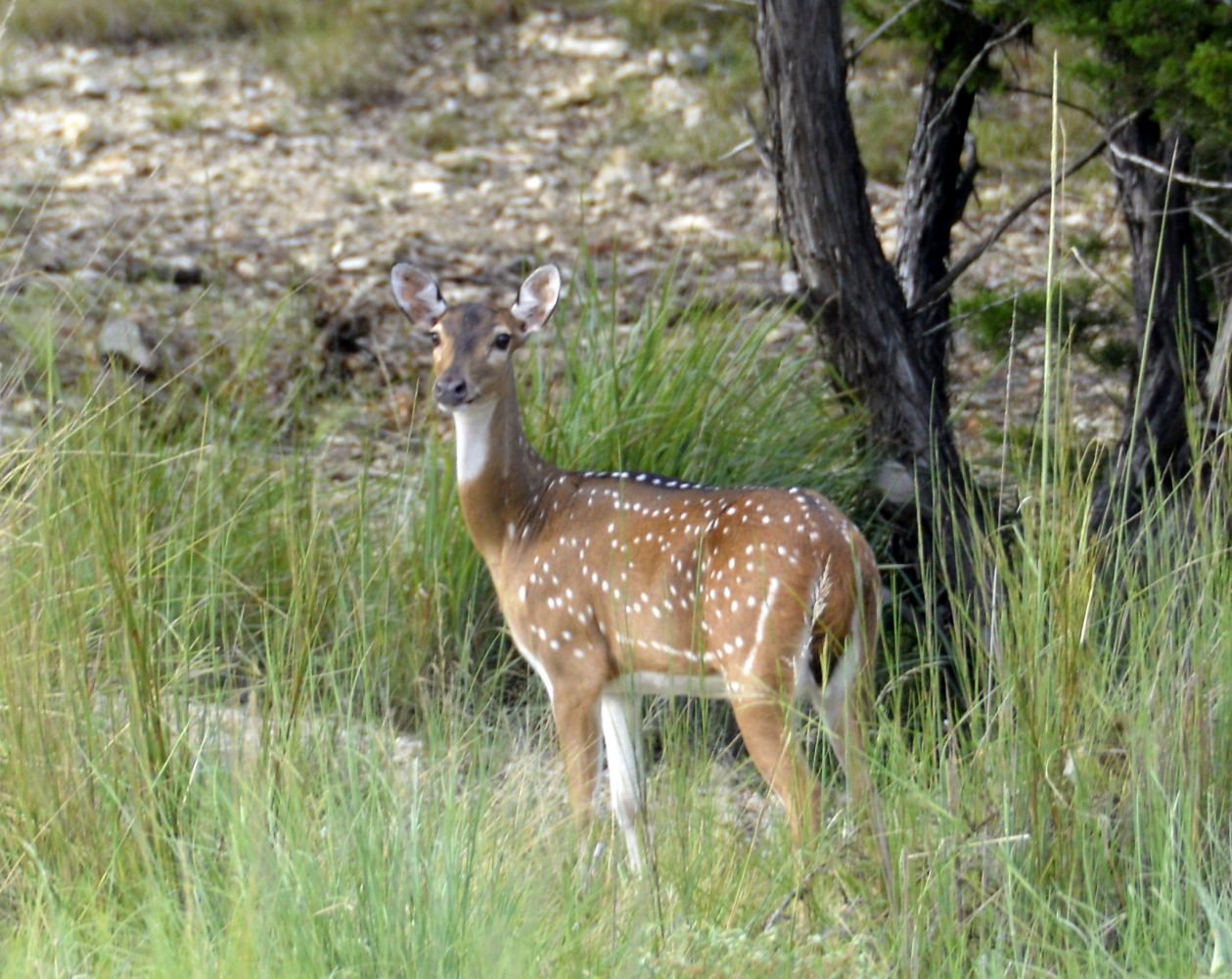 Axis Deer: They were originally transported from India to Texas for the high-fenced game ranches.
A few escaped and began multiplying. Axis can breed year-round and can survive on a diet of grasses as well as the plants which WT deer need. The axis deer are larger, bolder and can cause more destruction.
Axis Deer: They were originally transported from India to Texas for the high-fenced game ranches.
A few escaped and began multiplying. Axis can breed year-round and can survive on a diet of grasses as well as the plants which WT deer need. The axis deer are larger, bolder and can cause more destruction.
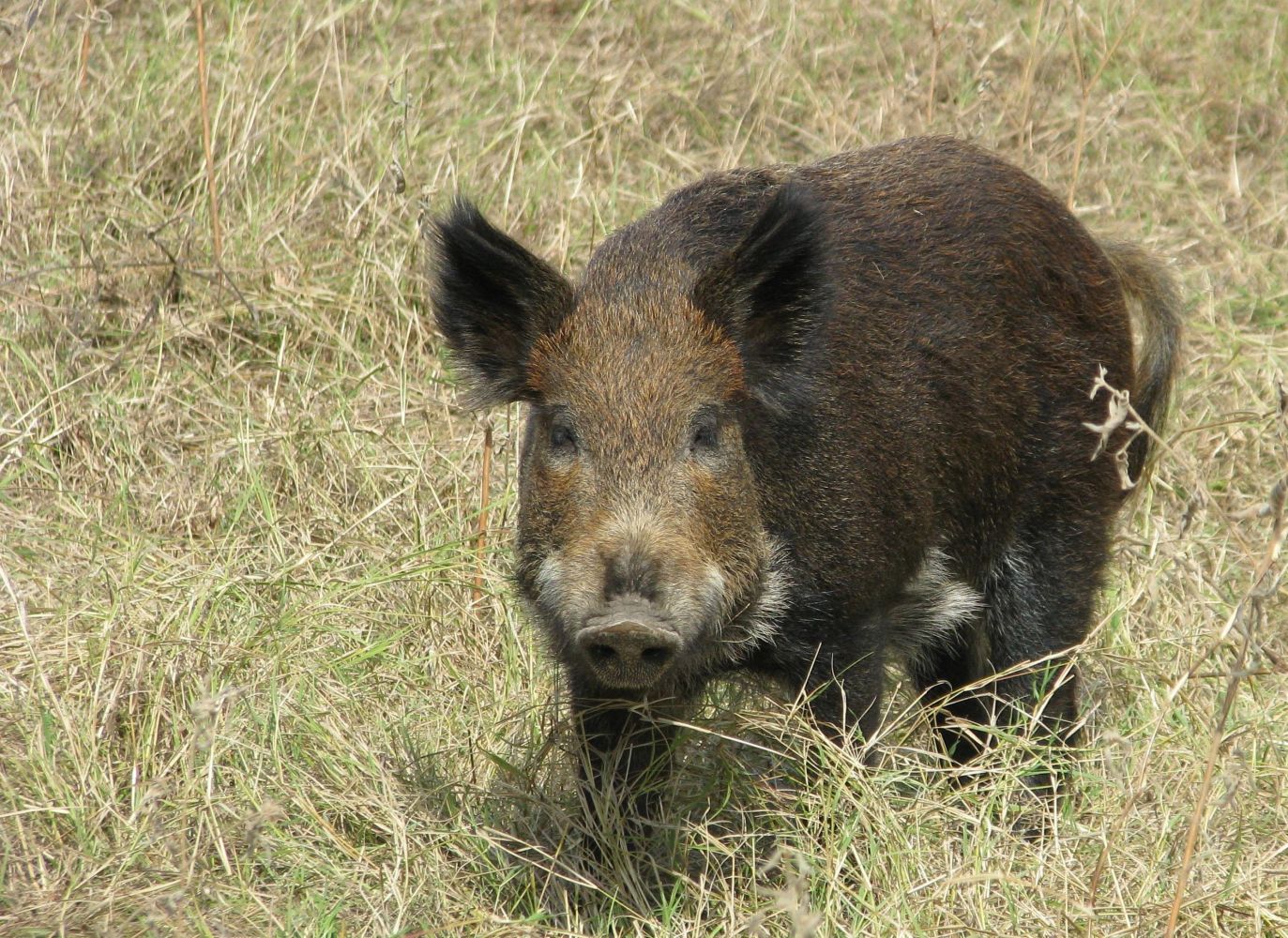 Feral Hogs: Neighboring subdivisions have experienced feral hogs and the damage they cause. So far River Crossing has been spared. The hogs like wet land areas, well irrigated lawns and deer corn either from feeders or hand thrown. They are very destructive and hard to stop and trapping is the only option for removal.
Feral Hogs: Neighboring subdivisions have experienced feral hogs and the damage they cause. So far River Crossing has been spared. The hogs like wet land areas, well irrigated lawns and deer corn either from feeders or hand thrown. They are very destructive and hard to stop and trapping is the only option for removal.
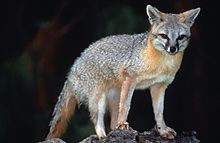 Gray Fox: They have gray hair on their back and a black tip on their tail, and they also have reddish hair on their chest, legs and ears. They are an opportunist eater that will eat a variety of animals and plants, including mice, squirrels, opossums, crickets, grasshoppers and other insects. The gray fox can be seen during the day as well as during the night.
Gray Fox: They have gray hair on their back and a black tip on their tail, and they also have reddish hair on their chest, legs and ears. They are an opportunist eater that will eat a variety of animals and plants, including mice, squirrels, opossums, crickets, grasshoppers and other insects. The gray fox can be seen during the day as well as during the night.
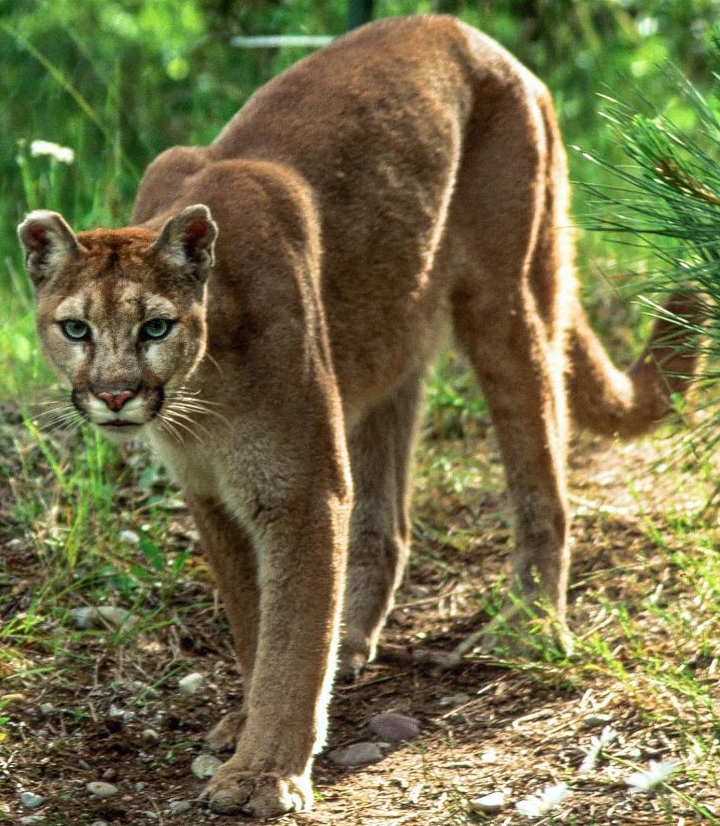 Mountain Lions: Mountain lions are also known as cougars, pumas, catamounts, painters, or panthers. They prefer hilly, remote regions and are very shy in nature. Mountain lions tend to prefer deer and wild hogs as they can capture these animals without getting too close to people. They also posed a threat to livestock and pets.
Mountain Lions: Mountain lions are also known as cougars, pumas, catamounts, painters, or panthers. They prefer hilly, remote regions and are very shy in nature. Mountain lions tend to prefer deer and wild hogs as they can capture these animals without getting too close to people. They also posed a threat to livestock and pets.
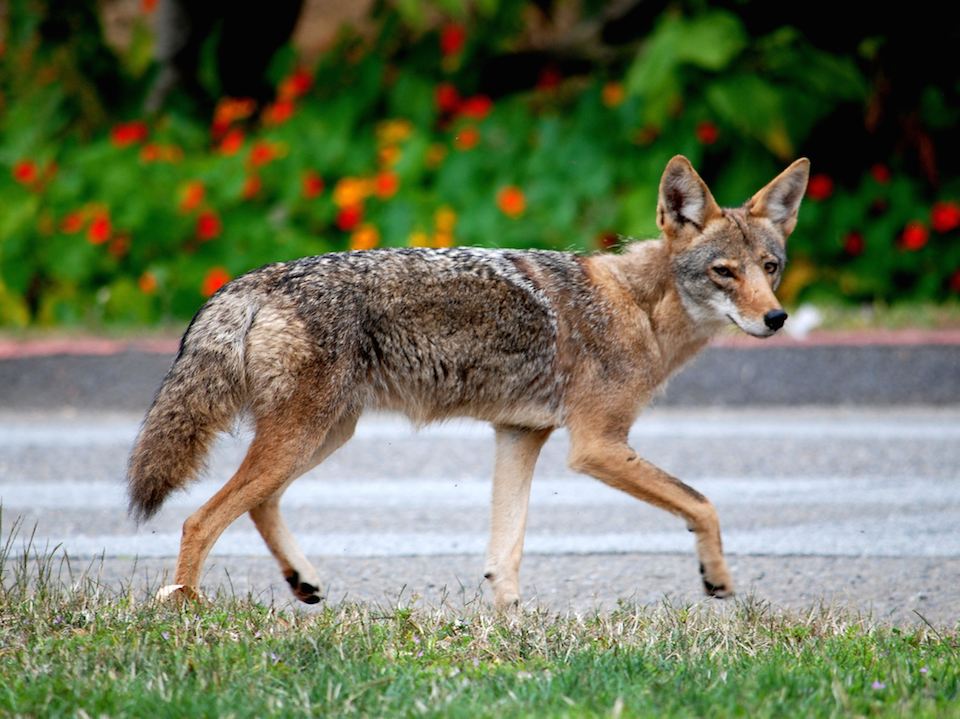 Urban Coyotes: Urban and suburban coyotes, like urban deer, are symptoms of a broader issue. People continue to expand housing subdivisions and other human development into what used to be open range wildlife habitat, especially on the expanding fringes of large metropolitan areas. This is increasing the potential for encounters and conflicts between people and wildlife. Excerpt from Texas Parks and Wildlife. Click here for more on Urban Coyotes
Urban Coyotes: Urban and suburban coyotes, like urban deer, are symptoms of a broader issue. People continue to expand housing subdivisions and other human development into what used to be open range wildlife habitat, especially on the expanding fringes of large metropolitan areas. This is increasing the potential for encounters and conflicts between people and wildlife. Excerpt from Texas Parks and Wildlife. Click here for more on Urban Coyotes
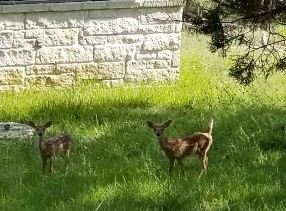 White-tailed Deer: White-tails eat mostly forbs (weedy plants) and shrubs, and can be found in wooded and brushy areas within the community. The deer do not migrate, but will remain in an area about 7 square city blocks year around. As good stewards, we need to manage our WT deer herd through the annual deer counts. Annual deer counts are important because they help you understand the health of the herd. The health of the herd is important to understand to help identify factors that may be causing stress to the herd such as disease, increases in nonnative species such as axis deer, feeding of deer and survival rates. The annual deer count is conducted mid-August through mid-October. Click here for Urban WT Deer
White-tailed Deer: White-tails eat mostly forbs (weedy plants) and shrubs, and can be found in wooded and brushy areas within the community. The deer do not migrate, but will remain in an area about 7 square city blocks year around. As good stewards, we need to manage our WT deer herd through the annual deer counts. Annual deer counts are important because they help you understand the health of the herd. The health of the herd is important to understand to help identify factors that may be causing stress to the herd such as disease, increases in nonnative species such as axis deer, feeding of deer and survival rates. The annual deer count is conducted mid-August through mid-October. Click here for Urban WT Deer
What can affect the WT population?
Disease: Chronic Wasting Disease (CWD) is a progressive, fatal disease that affects the brain, spinal cord, and many other tissues of farmed and free-ranging deer, elk, and moose. CWD can be spread in trough water or food which include contaminated bags of deer corn. The closest known free-ranging case in Texas was in Del Rio during December 2019.
Fencing: The increase in partial or full yard fencing provides less habitat for the WT deer. WT Deer are browsers enjoying shrubs, young trees and forbs (weeds).
Feeding: WT deer have a complex digestive system, a ruminant species, and if fed the wrong food at the wrong time of year, they can starve. Backyard feeders also attract more than just deer: opossum, raccoon, rodents, and skunks are frequent visitors to any regular feeding station. These critters bring in and spread their own parasites and diseases, including rabies.
Weather: Deer rely heavily on forage such as forbs during spring and summer to meet their nutritional needs associated with lactation and antler growth. When there is a drought condition the nutritional needs may not be met to ensure fawn survival or to promote the healthy growth of antlers.
Wildlife Information:
Report Dead Deer (including fresh roadkill) within River Crossing & Comal County
Text a dropped pin and any other details to:
• Olivia Kost- 737-240-9609 (Wildlife Biologist - Bexar, Comal, Guadalupe Counties)
If Olivia is unavailable, you can also send the information to other CWD technicians:
• Alexis Runnels- 830-348-9421
• Drew Berdo- 830-955-2283
RC Wildlife Committee Documents